The memory of life arrived on this earth carried by the soul of water. From this memory, life awoke, the human being emerged, and finally you and I were born. And now once again we look at water and breathe life into it. Your consciousness, awareness, and good will, and your smile from a feeling of love, all give new life to water and result in the creation of a new and glorious universe. - Masaru Emoto
Following on from my last stack on Water, I thought I’d continue looking into the subject.
I’ve recently come across Emoto’s work, and it’s not only fascinating, but profound. There’s definitely something here.
Whatever that “something” is, it has universal implications.
As I read through this, I ponder the question: If a baby is 75% water, then what does childhood vaccination do to the water in a baby’s body?
Toby’s framing is correct. That is the 95% issue.
With thanks to Dr Masaru Emoto.
Central Thesis
The central thesis and message of Masaru Emoto's book "The Hidden Messages in Water" can be summarized as follows:
Water is not just a simple substance, but a dynamic and responsive medium that reflects the consciousness, emotions, and intentions of the world around it. Emoto's primary argument is that human consciousness has a direct impact on the molecular structure of water, which can be observed through the formation of water crystals.
The book's core message is that love and gratitude are fundamental principles of nature and have the most positive effect on water's structure. By extension, Emoto proposes that cultivating these positive emotions and thoughts can lead to improved personal health, social harmony, and environmental wellbeing.
Emoto uses his water crystal experiments to demonstrate this thesis, showing how water exposed to positive words, music, and thoughts forms beautiful, symmetrical crystals, while negative influences result in distorted or incomplete formations. He extrapolates these findings to suggest that because humans are primarily composed of water, our thoughts and emotions have a profound impact on our physical and mental health, as well as on the world around us.
The book's overarching message is one of empowerment and responsibility. Emoto argues that each individual has the power to positively influence their own wellbeing and the state of the world through conscious thoughts and actions. He encourages readers to embrace love and gratitude in their daily lives as a means of creating positive change on both personal and global levels.
ABOUT THE AUTHOR
Masaru Emoto was born in Yokohama in July, 1943. He is a graduate of the Yokohama Municipal University’s department of humanities and sciences, with a focus on International Relations. In 1986 he established the IHM Corporation in Tokyo. In October of 1992 he received certification from the Open International University as a Doctor of Alternative Medicine. Subsequently he was introduced to the concept of micro-cluster water in the United States, and Magnetic Resonance Analysis technology. The quest thus began to discover the mystery of water.
Dr. Emoto undertook extensive research into water around the planet, not so much as a scientific researcher but more from the perspective of an original thinker. At length he realized that it was in the frozen crystal form that water showed us its true nature. He continues with this experimentation, and has written a variety of well-received books in Japanese, as well as the seminal Messages from Water, published bilingually. He is married to Kazuko Emoto who shares his passion and is head of Kyoikusha, the publishing arm of his company. They have three children.
INTRODUCTION
More than ten years have passed since I began taking photographs of frozen ice crystals.
For years before that I had conducted research into the measurement of wave fluctuations in water, but when I started learning about crystals, I discovered that water expresses itself in a vast variety of ways.
I learned that these photographs of crystals are filled with much wisdom for us. In contrast to tap water, natural water displays a beautiful array of crystals—even more so when the natural water is exposed to beautiful music. There are also fascinating differences generated in the crystals when the water is shown different words, such as “gratitude” or “stupid.” These crystals are filled with lessons concerning how we should—and must—live our lives.
In June 1999, I published a collection of photographs in a book called The Messages of Water from a small publishing company that I called Hado Kyoikusha (Wave Fluctuation Publishing). Although this book was self-published and not intended to be sold in the large bookstores, word of mouth resulted in it becoming a bestseller.
This is something that almost never happens in the publishing industry. I was filled half with amazement as this was happening right in front of my eyes, and half with appreciation for the many people who took the time to tell others about the book.
In order to share my book with more people, I had all the Japanese explanations translated for an English version. This led to further successes, and I began receiving requests from Switzerland and other countries throughout the world to give lectures.
The publishing of these crystal photographs, with the many messages that they have for the world, couldn’t have come at a more appropriate moment in history, and it may well be a sign of the times that so many people are receptive of these messages. I thank God that I have been given the opportunity to work in this capacity.
I understand that some people have difficulty with the word or concept God. The main focus in this book is water. And the more you understand water, the more difficult you will find it to deny the existence of a god. I’d like you to think about your feelings on this topic as you look through the crystal photographs found herein.
When I was first asked to write this book for Sunmark Publishing in Japan, I immediately knew that there were many marvelous things inside me that I wanted to write about, and when I told this to Nobutaka Ueki, President of Sunmark Publishing, he said that was what he wanted me to focus on. He even sent along a subordinate, Ryuya Saitou, to hear my lectures in Switzerland.
Now that the book is finished, I am filled with a sense of satisfaction. This book has given me a “stage” from which to speak to you about the “fluctuation” theories that I have studied for more than a decade, and also about my own experiences, my research based on the observation of human behavior, and my own thoughts concerning the cosmos.
I wish to take this opportunity to express my appreciation to Masashi Tanigawa, president of Kokoro Inc., Naoki Uchiki, Chief Editor of Sunmark; Tatsuya Saito; and also to the people who I interviewed for this book.
I also owe appreciation to Tetsuya Taguchi, past president of Nichirei Ice Inc., who provided much of the water that I used to make the crystals introduced in this book.
Thank you to Beyond Words Publishing for publishing this book in English, so that more people around the world can read about our relationship with water.
I must not forget to offer my gratitude to all the readers of this book. And, finally, I must say thank you and pay my respects to the water of the cosmos.
Thank you.
The Hidden Messages in Water (2001)
By Masaru Emoto
The Hidden Messages in Water book by Masaru Emoto (thriftbooks.com)
35 Questions & Answers
Question 1: What is the fundamental principle of the universe according to Masaru Emoto?
According to Masaru Emoto, the fundamental principle of the universe is that existence is vibration. Everything in the universe is in a state of vibration, with each thing generating its own unique frequency. This principle forms the basis of Emoto's research and understanding of water crystals and their relationship to human consciousness and the world around us.
Question 2: How does Emoto explain the formation of water crystals?
Emoto explains that when water freezes, the particles link together to form a crystal nucleus. If the nucleus grows in a stable way into a hexagonal shape, a visible water crystal appears. The formation of these crystals is influenced by the information and vibrations the water has been exposed to. Water that is in alignment with nature and positive information tends to form complete and beautiful hexagonal crystals, while water exposed to negative information or pollutants often forms incomplete or distorted crystals.
Question 3: What impact do words, music, and thoughts have on water crystals?
Words, music, and thoughts have a significant impact on water crystals according to Emoto's research. Positive words like "love" and "gratitude" result in beautiful, complete crystals, while negative words like "you fool" produce distorted or incomplete formations. Classical music tends to create intricate and well-formed crystals, while heavy metal music results in fragmented shapes. Emoto also found that human consciousness and intentions can influence crystal formation, with prayer and positive thoughts producing more beautiful crystals.
Question 4: How does Emoto interpret Einstein's theory of relativity (E=MC2) in relation to consciousness?
Emoto interprets Einstein's theory of relativity (E=MC2) by suggesting that "C" could represent consciousness instead of the speed of light. In this interpretation, "M" represents the number of people consciously focused, and "E" is the resulting energy. This perspective implies that increasing human consciousness, even by a small amount, could result in a significant increase in energy due to the squared factor. Emoto uses this interpretation to emphasize the potential power of collective human consciousness to effect change in the world.
Question 5: What is the significance of "love and gratitude" in Emoto's research?
"Love and gratitude" hold special significance in Emoto's research as they consistently produce the most beautiful and complete water crystals. Emoto considers these concepts to be fundamental principles of nature and the phenomenon of life. He suggests that a balance of two parts gratitude to one part love is ideal for human consciousness and wellbeing. Emoto believes that by filling our lives with love and gratitude, we can create a positive ripple effect that spreads throughout the world, ultimately leading to a cleaner, healthier planet and happier humanity.
Question 6: How does Emoto explain the concept of resonance in relation to human emotions?
Emoto explains resonance in human emotions through the principle that vibrations of the same frequency resonate with each other. He suggests that people with similar emotional frequencies are attracted to one another, resulting in friendships or relationships. Emoto also notes that resonance can occur between frequencies that are multiples of each other, explaining why people might be drawn to individuals with very different or higher vibrational levels. This concept of resonance is used to explain various human interactions and emotional states.
Question 7: What is the "Do-re-mi-fa-so-la-ti theory" and how does it relate to the elements?
The "Do-re-mi-fa-so-la-ti theory" is Emoto's way of explaining how the frequency of everything in the cosmos can be summarized in seven parts, similar to musical notes. He proposes that these seven sounds express all frequencies from lowest to highest when repeated in octaves. Emoto relates this theory to the elements by suggesting that the vibrations created by human emotions correspond to vibrations emitted by various elements. For example, he associates irritation with mercury, anger with lead, and sadness with aluminum.
Question 8: How does Emoto propose that water arrived on Earth?
Emoto discusses the theory proposed by Louis Frank of the University of Iowa, which suggests that water arrived on Earth in the form of small comets or ice balls from outer space. These mini-comets, weighing around a hundred tons, are said to fall into Earth's atmosphere at a rate of about twenty per minute. This theory posits that these ice comets bombarded Earth billions of years ago, creating the seas and oceans, and continue to do so today. Emoto finds this theory intriguing as it aligns with his view of water as potentially extraterrestrial in origin.
Question 9: What role does water play in the formation of life according to Emoto?
According to Emoto, water plays a crucial role in the formation of life. He describes water as the force that creates and gives life, acting as both the mother of life and the energy for life. Emoto explains that water's unique ability to dissolve and carry substances created a "soup of life" in the oceans, which became the birthplace of all living creatures on Earth. He believes that water carried the program needed for the development of life when it arrived from outer space, and continues to distribute information throughout the Earth as it circulates.
Question 10: How does Emoto explain the relationship between human consciousness and water?
Emoto sees a strong connection between human consciousness and water. He believes that water can respond to and record human thoughts, words, and intentions. This is demonstrated through his crystal photography experiments, where water exposed to positive thoughts and words forms beautiful crystals, while negative influences result in distorted formations. Emoto suggests that because humans are primarily composed of water, our consciousness has a direct impact on the water in our bodies and, by extension, on our health and wellbeing. He proposes that by maintaining positive consciousness, we can influence not only our own water but also the water in the world around us.
Question 11: What is the significance of chlorine in tap water according to Emoto's research?
According to Emoto's research, chlorine in tap water has a significant negative impact on water's natural properties. He found that tap water treated with chlorine is unable to form complete and beautiful crystals. Emoto explains that chlorine, which has been used for water sanitation for over fifty years in Japan, damages the innate ability of water to form crystals. This observation led him to conclude that the use of chlorine in water treatment processes may be detrimental to the water's natural life-giving properties and potentially to human health.
Question 12: How does Emoto propose using water crystals for earthquake prediction?
Emoto proposes that water crystal formation could be used as a method for earthquake prediction. He suggests that water, particularly groundwater, is capable of detecting forthcoming earthquakes earlier than any other substance. His idea involves taking daily samples of groundwater and observing changes in crystal formation. By accumulating data on crystal patterns leading up to earthquakes and comparing crystals before and after seismic events, Emoto believes it may be possible to identify similarities that could be used to predict future earthquakes.
Question 13: What is the concept of "morphic resonance" and how does it relate to Emoto's work?
"Morphic resonance" is a theory proposed by Dr. Rupert Sheldrake, which suggests that when the same thing repeats itself, a "morphic field" is formed, increasing the likelihood of that event happening again. This concept relates to Emoto's work as it provides a theoretical framework for understanding how information might be transmitted through water. Emoto sees his water crystal experiments as a potential way to express the resonance of morphic fields in a visually observable form, supporting the idea that consciousness and information can have far-reaching effects beyond immediate physical boundaries.
Morphic Resonance - Lies are Unbekoming (substack.com)
Question 14: How does Emoto explain the power of prayer in relation to water?
Emoto explains the power of prayer through experiments involving water and religious rituals. In one instance, he observed a Shinto priest performing an incantation near a lake. The water became visibly clearer within minutes, and crystal photographs taken before and after the prayer showed significant improvements in formation. Emoto attributes this change to the "spirit of words" and the energy of the prayer. He suggests that the vibrations created by sincere prayer can have an immediate and positive impact on water, demonstrating the potential influence of human consciousness on the physical world.
Question 15: What is the significance of the number 108 in Emoto's theories?
The number 108 holds significance in Emoto's theories in several ways. He relates it to Buddhist teachings about the 108 earthly desires that humans are born with. Emoto also suggests that there might be 108 elements in total, corresponding to these 108 desires. Furthermore, he notes that 9 (the number of planets in the solar system) multiplied by 12 equals 108. This number appears to represent a kind of completeness or wholeness in Emoto's understanding of the universe and human nature, linking cosmic structures with human consciousness and the elemental composition of the world.
Question 16: How does Emoto relate water to human emotions and health?
Emoto proposes a strong connection between water, human emotions, and health. He suggests that since the human body is primarily composed of water, our emotional states directly affect the water in our bodies. Positive emotions like love and gratitude create beautiful water crystals, while negative emotions result in distorted formations. Emoto believes this impacts our physical health, with positive emotions promoting wellbeing and negative emotions potentially leading to illness. He emphasizes the importance of maintaining positive thoughts and emotions to keep the water in our bodies in an optimal state for health.
German New Medicine - Lies are Unbekoming (substack.com)
Question 17: What is the concept of "wise water" and who introduced it?
The concept of "wise water" was introduced by Joan S. Davis, a water researcher from Zurich Technical University. Davis distinguishes between "wise water" and "juvenile water." Wise water refers to groundwater that has spent years or even centuries seeping through the earth, acquiring information from various minerals. In contrast, juvenile water is recently fallen rainwater. Davis suggests that wise water has beneficial properties due to its long journey through the earth, emphasizing the importance of natural water movement and the information water accumulates over time.
Water - Lies are Unbekoming (substack.com)
Question 18: How does Emoto explain the formation of language in relation to water and nature?
Emoto theorizes that human language developed from our need to interpret and communicate about the natural world, particularly the sounds and vibrations of water and nature. He suggests that early humans needed to understand these sounds for survival, leading to the development of simple vocal communications. As cultures evolved in different environments, unique languages emerged reflecting the specific vibrations of their natural surroundings. Emoto believes this explains why there are so many diverse languages, yet certain fundamental concepts like gratitude produce similar responses in water across different cultures.
Question 19: What is the "cloud erasing" experiment and what does it demonstrate?
The "cloud erasing" experiment involves attempting to dissipate a cloud using the power of thought. Emoto instructs participants to focus on a single cloud, imagining an energy beam breaking it apart, while stating "The cloud has disappeared" and expressing gratitude. He claims that following these steps often results in the cloud thinning out and disappearing within minutes. This experiment is meant to demonstrate the potential impact of human consciousness on the physical world, particularly on water in its gaseous state, supporting Emoto's belief in the power of thought and intention.
Question 20: How does Emoto relate water to the concept of the soul?
Emoto proposes that water might be closely linked to the concept of the soul. He suggests that the experiences and memories we accumulate throughout our lives may be recorded in the water within our bodies, potentially forming what we call the soul. Emoto speculates that when we die, this information-rich water might be launched into space, carrying our experiences back into the cosmos. He views humans as essentially being water and theorizes that our responsibility on Earth is to purify this water through positive consciousness before it returns to the universe.
Question 21: What is the significance of hydrogen and oxygen in water according to Emoto?
Emoto draws a parallel between the composition of water (H2O) and the balance of love and gratitude in human consciousness. He suggests that the ideal ratio is two parts gratitude to one part love, mirroring the two hydrogen atoms to one oxygen atom in a water molecule. This comparison emphasizes Emoto's belief in the importance of gratitude, which he sees as a more passive and receptive energy compared to love. He proposes that maintaining this balance in our consciousness can lead to personal wellbeing and positive changes in the world around us.
Question 22: How does Emoto explain the impact of electromagnetic waves on water?
Emoto's research indicates that electromagnetic waves have a negative impact on water's ability to form beautiful crystals. He conducted experiments exposing water to various sources of electromagnetic waves, such as televisions, computers, and mobile phones. The resulting crystals were often deformed or incomplete, similar to those formed when water is exposed to negative words or emotions. However, Emoto also found that water shown "love and gratitude" was more resistant to these effects, suggesting that positive consciousness might help mitigate the harmful impacts of electromagnetic waves on water and, by extension, on human health.
Question 23: What is the proposed relationship between water and the cosmos in Emoto's theory?
Emoto proposes a cyclical relationship between water and the cosmos. He suggests that water arrives on Earth from outer space, possibly in the form of ice comets, carrying information essential for life. On Earth, water accumulates new information through its interactions with the environment and living beings. Emoto theorizes that this information-rich water eventually returns to the cosmos, completing a grand cycle. He likens the Earth to a liver in the solar system, purifying water before sending it back into the universe, with humans playing a crucial role in this purification process through their consciousness and actions.
Question 24: How does Emoto suggest we can change the world through our consciousness?
Emoto believes that human consciousness has the power to significantly impact the world, particularly through its effect on water. He suggests that by maintaining thoughts of love and gratitude, we can positively influence the water in our bodies, in our immediate environment, and eventually across the globe. Emoto proposes that this positive consciousness creates a "morphic field" that can resonate with water everywhere, potentially leading to global changes. He encourages people to focus on love and gratitude in their daily lives as a means of contributing to a more harmonious and cleaner world.
Question 25: What is the significance of crystals formed from water exposed to heavy metal music?
In Emoto's experiments, water exposed to heavy metal music typically formed fragmented, malformed, or incomplete crystals. These results were similar to those observed when water was exposed to negative words or emotions. Emoto interprets this as evidence that the vibrations produced by heavy metal music have a disruptive effect on water's natural structure. This observation contributes to his broader theory that different types of music, words, and emotions can significantly influence water's molecular structure, potentially affecting the wellbeing of living organisms composed largely of water.
Question 26: How does Emoto relate water to the concept of time?
Emoto suggests that water exists in a realm where time as we understand it may not apply. He discusses the idea that water can hold information from the past, present, and future simultaneously. This concept is linked to his belief that water from outer space carries ancient information about life, and that water on Earth continues to accumulate new information. Emoto proposes that by studying water, we might gain insights into events across different time periods, including potential future occurrences. This perspective challenges conventional notions of linear time and suggests water as a medium that transcends temporal boundaries.
Question 27: What is the proposed relationship between water and DNA?
While Emoto doesn't extensively discuss DNA, he does touch on its relationship to water. He suggests that water might play a role in transmitting information that complements or goes beyond genetic coding. Emoto proposes that the water in our bodies could carry additional information that influences our development and characteristics, working alongside DNA. This idea is part of his broader concept that water acts as an information carrier, not just within individual organisms, but also across generations and potentially throughout the cosmos.
Question 28: How does Emoto explain the concept of immunity in relation to love and gratitude?
Emoto proposes that love and gratitude are key to boosting immunity. He initially stated that "immunity is love," but later refined this to include gratitude as well. Through his experiments, Emoto found that water exposed to the words "love and gratitude" formed the most beautiful and complete crystals. He also observed that this water seemed more resistant to the negative effects of electromagnetic waves. Based on these findings, Emoto suggests that cultivating feelings of love and gratitude can strengthen our immune systems and overall health by positively influencing the water in our bodies.
Question 29: What is the significance of the experiment with rice in Emoto's research?
The rice experiment involved placing rice in three jars: one told "thank you," another told "you fool," and a third ignored. After a month, the rice told "thank you" began to ferment with a pleasant smell, the rice told "you fool" rotted and turned black, and the ignored rice rotted faster than the one told "you fool." Emoto interprets these results as evidence that positive words and attention can have beneficial effects on living organisms, while negative words are harmful, and being ignored is potentially even more damaging. This experiment supports his broader theory about the impact of human consciousness and words on water and living things.
Question 30: How does Emoto propose to purify polluted water?
Emoto suggests a two-step approach to purifying polluted water. The first step involves using ultrasound technology to break down harmful chemicals. The second step uses vibration technology to expose the water to information with frequencies opposite to those of the remaining toxins. Emoto believes that combining these methods could more effectively rid water of pollutants than using either method alone. He also emphasizes the importance of human consciousness in water purification, suggesting that prayer, positive thoughts, and words of love and gratitude can have a cleansing effect on water.
Question 31: What is the concept of the "spirit of words" and how does it relate to water?
The "spirit of words" or "kotodama" in Japanese, refers to the belief that words have an inherent power or energy that can influence the physical world. Emoto relates this concept directly to water, demonstrating through his crystal photography that words, whether spoken or written, can affect water's molecular structure. He shows that positive words like "love" and "gratitude" produce beautiful, well-formed crystals, while negative words result in distorted formations. This concept underpins Emoto's belief that human consciousness, expressed through language, can have a tangible impact on water and, by extension, on our health and the world around us.
Question 32: How does Emoto explain the formation of negative emotions in relation to elements?
Emoto proposes a correlation between negative emotions and specific elements based on their vibrational frequencies. He suggests that irritation corresponds to mercury, anger to lead, sadness and sorrow to aluminum, uncertainty to cadmium, despair to steel, and stress to zinc. This theory is part of Emoto's broader idea that everything in the universe vibrates at specific frequencies, including human emotions and physical elements. He uses this concept to explain why certain emotional states might attract or be influenced by particular elements, potentially affecting human health and behavior.
Question 33: What is the significance of water from Lourdes in Emoto's research?
Water from Lourdes, France, known for its healing properties, holds special significance in Emoto's research. He suggests that this water might be imbued with the feelings of appreciation from the Virgin Mary, giving it unique properties. In Emoto's crystal photography, water from Lourdes produced beautiful, well-formed crystals. He proposes that the healing attributed to this water could be due to its ability to counteract negative emotions (like hate) with positive vibrations (like gratitude). This aligns with his broader theory about the impact of positive consciousness on water's structure and its potential healing effects.
Question 34: How does Emoto propose that water can predict future events?
Emoto suggests that water might have the ability to predict future events due to its sensitivity to subtle changes in the environment. He specifically mentions the potential for using water crystal formation to predict earthquakes, proposing that changes in groundwater crystals might precede seismic activity. Emoto extends this idea to other forms of natural disasters and even human-made events, suggesting that careful observation of water crystal patterns could provide early warnings. This concept is based on his belief that water is capable of detecting and storing information about impending changes in its surroundings.
Question 35: What is Emoto's vision for a future research facility?
Emoto envisions a unique research facility shaped like a hexagonal water crystal. At its center would be a laboratory for studying water crystals, surrounded by six other laboratories focusing on different scientific fields: physics and mathematics, biology and medicine, astronomy and oceanography, philosophy and religion, and chemistry and engineering. Each lab would explore 18 categories of research, totaling 108 areas of study. This interdisciplinary approach aims to foster collaboration and a holistic understanding of water's role in various aspects of life and the universe. Emoto believes this structure could lead to discoveries that truly contribute to the future of Earth and humanity.
I appreciate you being here.
If you've found the content interesting and useful, please consider supporting it through a small paid subscription. While everything here is free, your paid subscription is important as it helps in covering some of the operational costs and supports the continuation of this independent research and journalism work.
Please make full use of the Free Libraries.
Unbekoming Interview Library: Great interviews across a spectrum of important topics.
Unbekoming Book Summary Library: Concise summaries of important books.
Stories
I'm always in search of good stories, people with valuable expertise and helpful books. Please don't hesitate to get in touch at unbekoming@outlook.com
Baseline Human Health
Watch and share this profound 21-minute video to understand and appreciate what health looks like without vaccination.




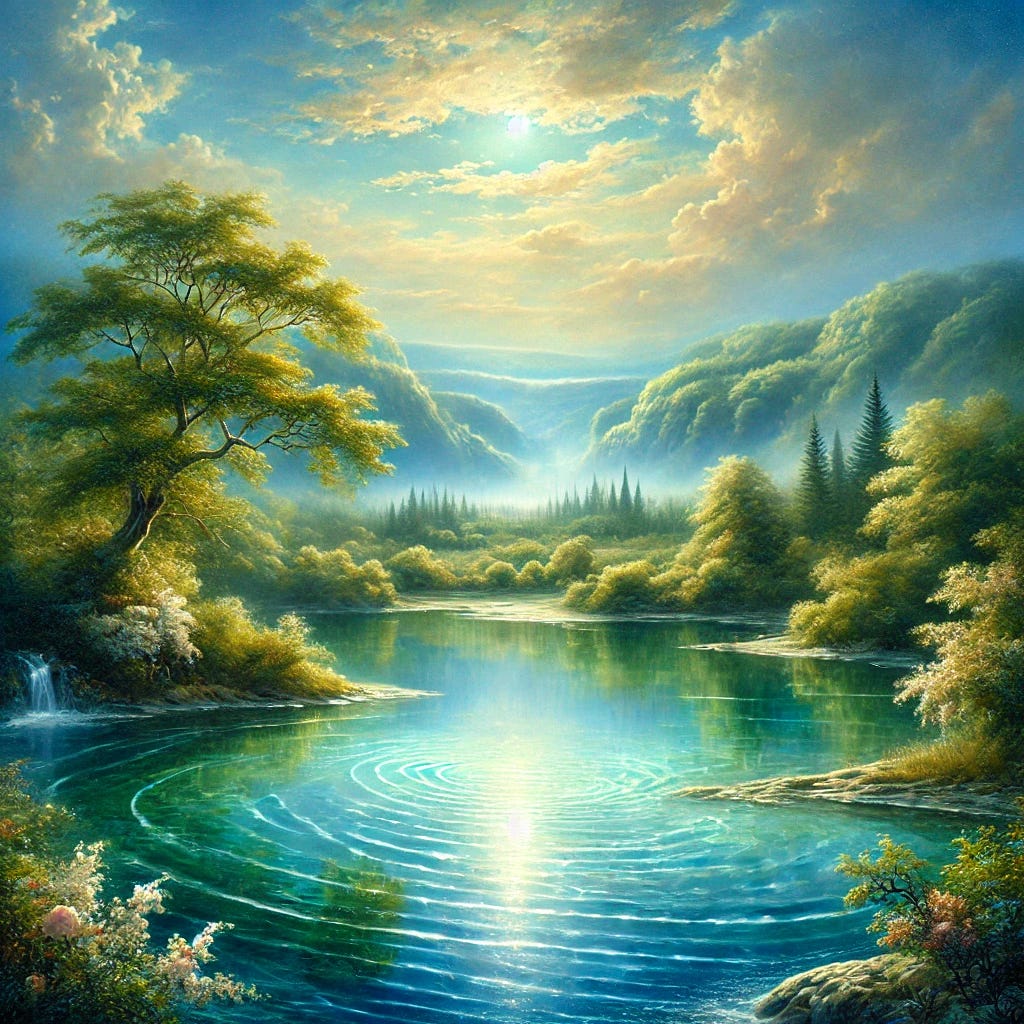
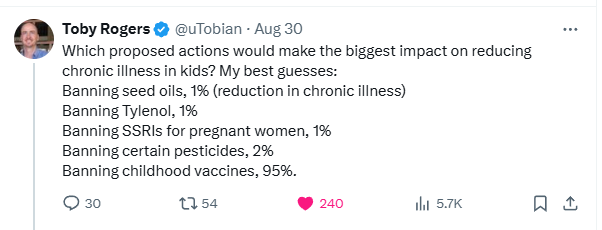

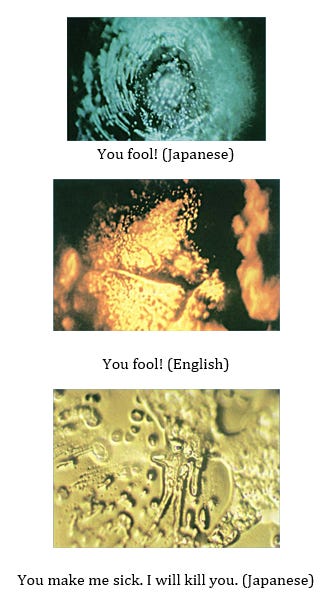
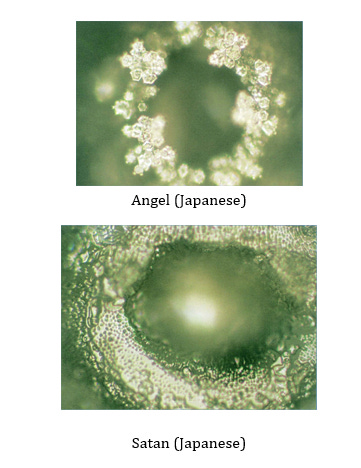
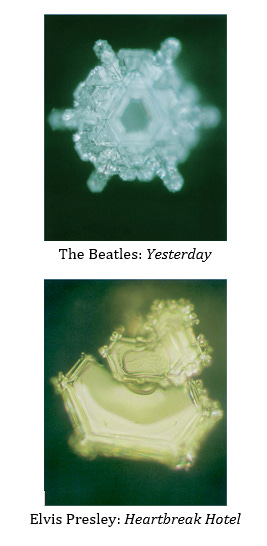
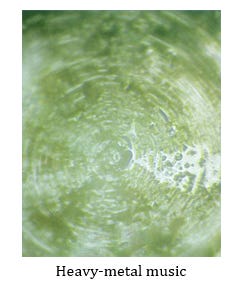
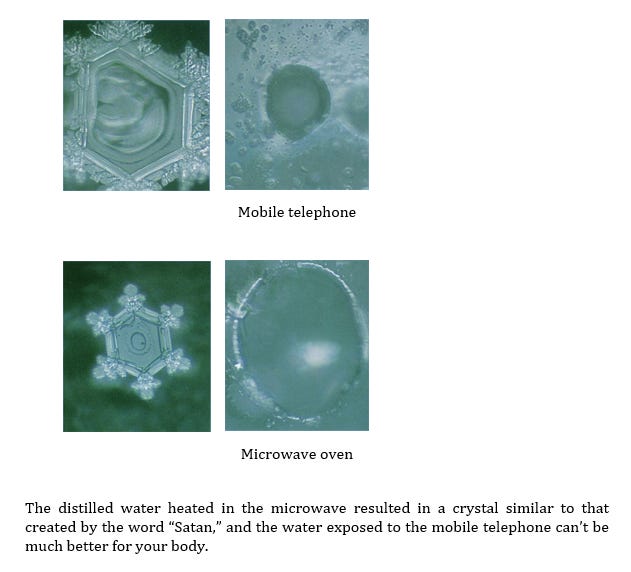
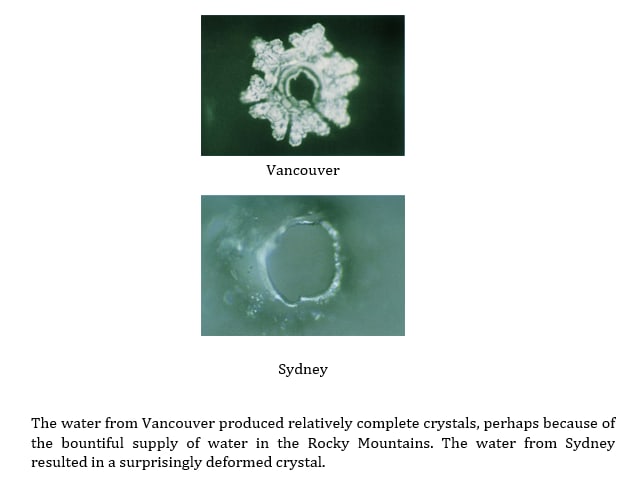
My wife and I brought Dr. Emoto to Dallas for a talk and a book signing and carried the books in our online store for many years. I'm glad you discovered his work. Veda Austin has replicated and extrapolated his work in the healing domain with amazing results. https://youtu.be/Ikj1DgZW7UI?si=dvb6gg1wMF-eKPU6
Such a deeply beautiful thing to be revealed. I’ve not heard of Dr. Emoto before and I’m so glad you showcased his work. Thank you!